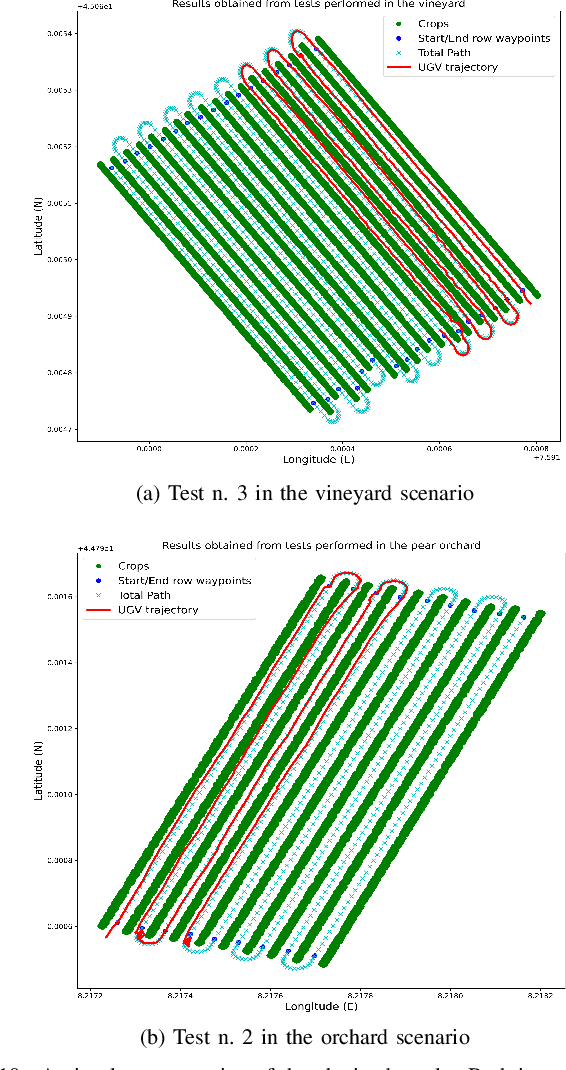A Deep Learning Driven Algorithmic Pipeline for Autonomous Navigation in Row-Based Crops
Paper and Code
Dec 07, 2021



Expensive sensors and inefficient algorithmic pipelines significantly affect the overall cost of autonomous machines. However, affordable robotic solutions are essential to practical usage, and their financial impact constitutes a fundamental requirement to employ service robotics in most fields of application. Among all, researchers in the precision agriculture domain strive to devise robust and cost-effective autonomous platforms in order to provide genuinely large-scale competitive solutions. In this article, we present a complete algorithmic pipeline for row-based crops autonomous navigation, specifically designed to cope with low-range sensors and seasonal variations. Firstly, we build on a robust data-driven methodology to generate a viable path for the autonomous machine, covering the full extension of the crop with only the occupancy grid map information of the field. Moreover, our solution leverages on latest advancement of deep learning optimization techniques and synthetic generation of data to provide an affordable solution that efficiently tackles the well-known Global Navigation Satellite System unreliability and degradation due to vegetation growing inside rows. Extensive experimentation and simulations against computer-generated environments and real-world crops demonstrated the robustness and intrinsic generalizability of our methodology that opens the possibility of highly affordable and fully autonomous machines.
 Add to Chrome
Add to Chrome Add to Firefox
Add to Firefox Add to Edge
Add to Edge